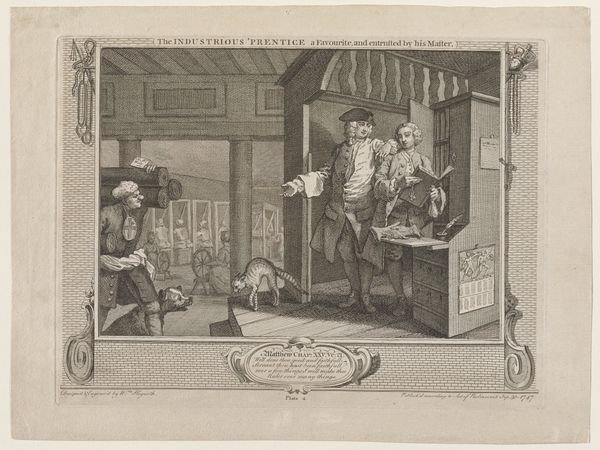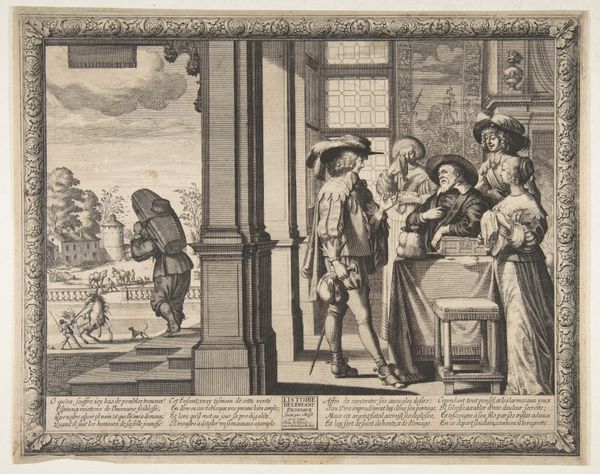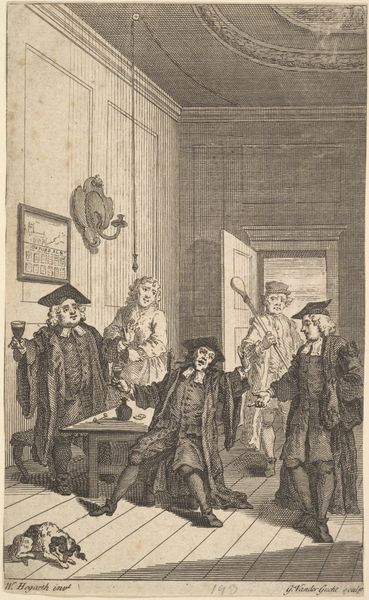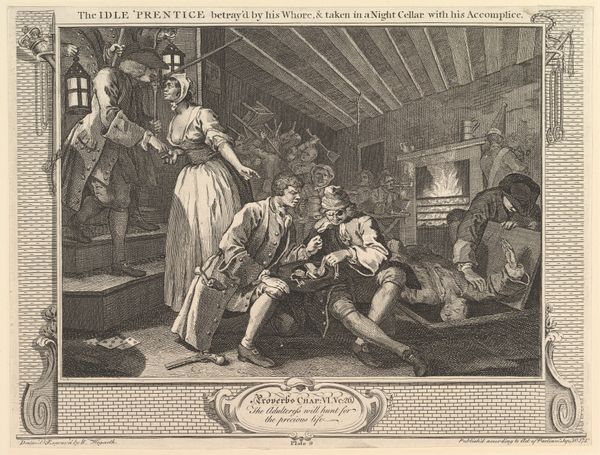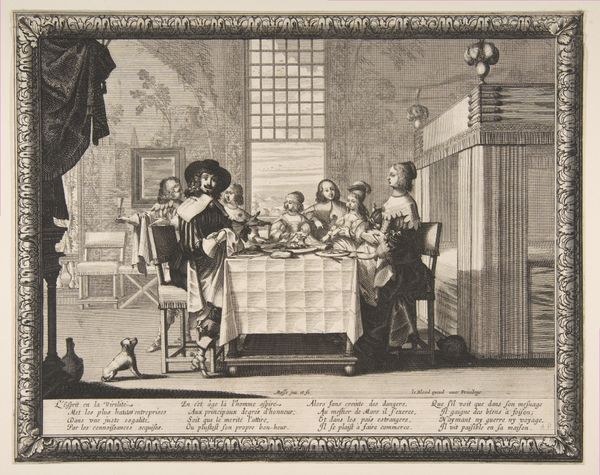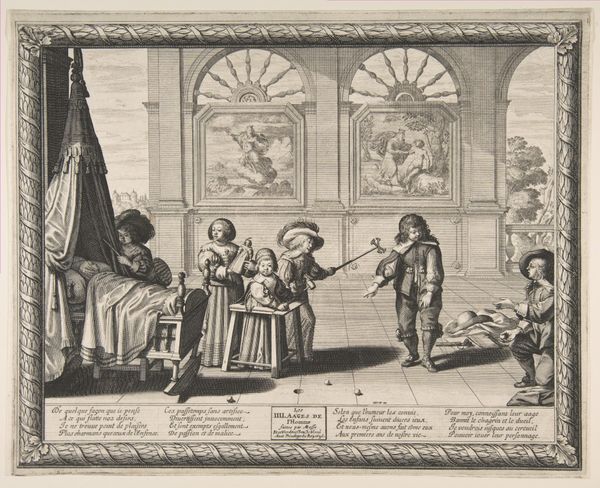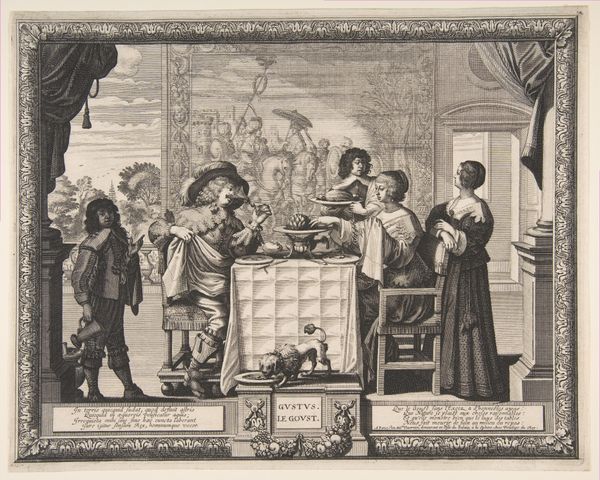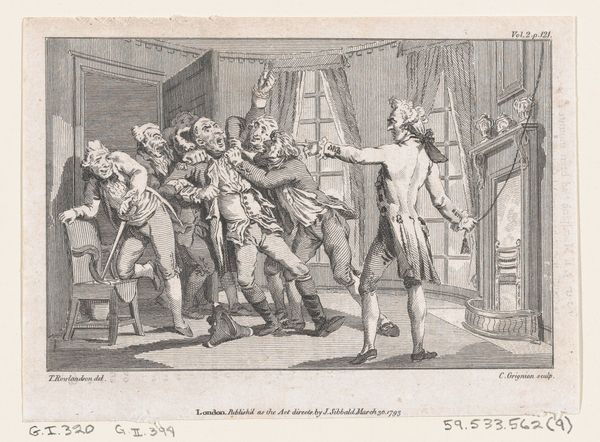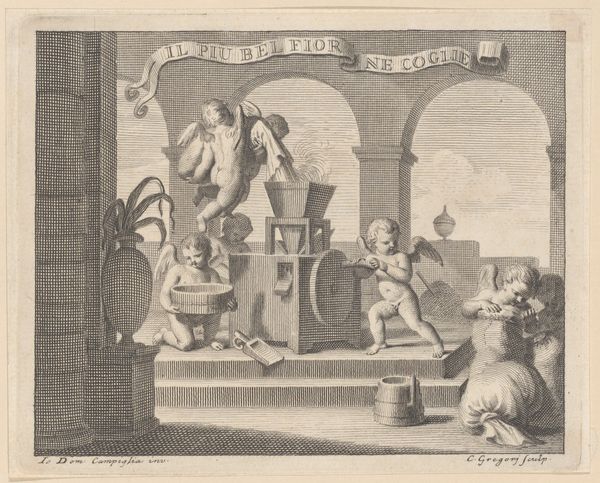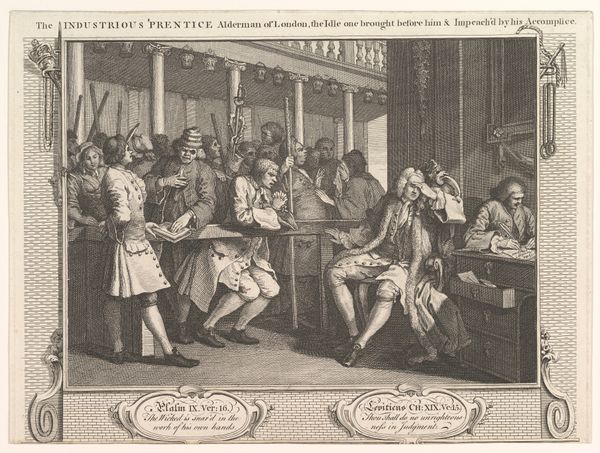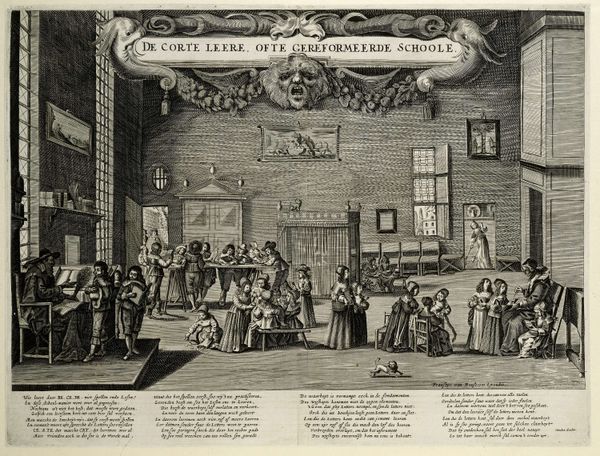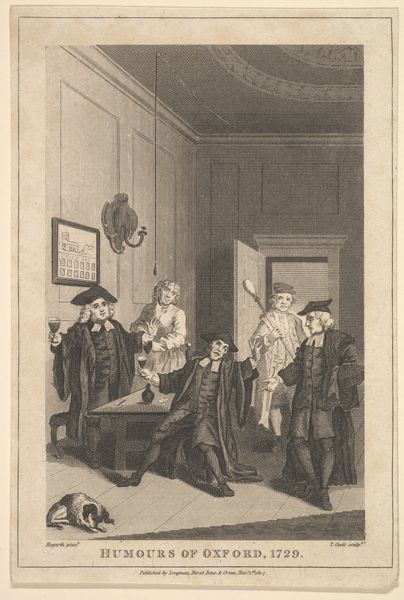
The Industrious 'Prentice a Favorite and Entrusted by his Master (Industry and Idleness, plate 4) 1747
0:00
0:00
drawing, print, engraving
#
drawing
#
narrative-art
# print
#
dog
#
men
#
genre-painting
#
history-painting
#
engraving
Dimensions: plate: 10 3/8 x 13 1/2 in. (26.3 x 34.3 cm) sheet: 10 11/16 x 13 7/8 in. (27.1 x 35.2 cm)
Copyright: Public Domain
Curator: William Hogarth’s engraving, “The Industrious ‘Prentice a Favorite and Entrusted by his Master,” created in 1747, depicts a scene that exudes prosperity and trust. The textures achieved through engraving, despite its inherent limitations, are remarkably diverse. Editor: It strikes me as meticulously ordered, almost rigidly so. The linear perspective is strong, and the detail creates a sense of depth and narrative complexity, particularly regarding social dynamics and moral fortitude. Curator: Hogarth, throughout his artistic career, demonstrated a keen interest in portraying the social structures of his era. This work belongs to his series, *Industry and Idleness*, in which he employs visual language to narrate the contrasting paths of two apprentices, highlighting their respective industry and idleness as it pertains to class mobility in eighteenth century Britain. Notice, how on the left, an older man carries fabric to workers sitting around spools while inside we have two young men and the image is much less active and filled with production. Editor: Yes, the division in pictorial space mirrors that thematic dichotomy quite effectively. On a formal level, the distribution of light and shadow pulls us into this scene as though peering into the master's world, and how the engraver has contrasted these scenes as well with hatching. Hogarth employs clear compositional strategies that reinforces societal values of the period. He truly encapsulates through the material possibilities of engraving, a moral argument about societal stability that reinforces capitalist structures and is visually organized. Curator: Absolutely. The characters, though caricatured, hold a certain representational value, contributing to a social commentary through their actions and attire. Look at the way that one holds his book, not a care in the world. He clearly wants for nothing and how does he deserve this? And why would it matter what their master would want of them? This could certainly suggest questions and not answers depending on our place within society at that moment, I find that truly remarkable for a print. Editor: I agree. Beyond the explicit narrative, the engraving technique adds an additional layer to its reading; that linear structure provides a sense of clear moral path; which is further underscored by the content but also by Hogarth’s technique that visually speaks to a sort of structured social organization and hierarchy that ultimately enforces moral judgments about how to move around in it. Curator: Examining the formal and contextual elements reveals an art piece deeply enmeshed in its societal era; a window to the values of mid eighteenth century England. Editor: Yes, a tightly designed picture that underscores class boundaries, societal judgements, and what kind of performance one needs to do to either cross, or remain fixed, within such boundaries.
Comments
No comments
Be the first to comment and join the conversation on the ultimate creative platform.
